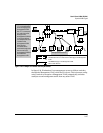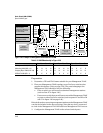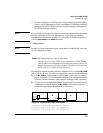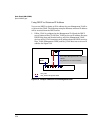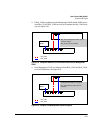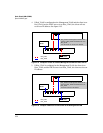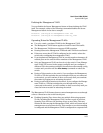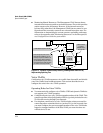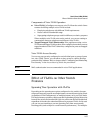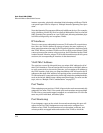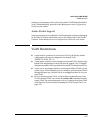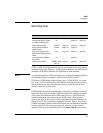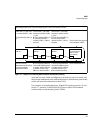
2-55
Static Virtual LANs (VLANs)
Effect of VLANs on Other Switch Features
Components of Voice VLAN Operation
■ Voice VLAN(s): Configure one or more voice VLANs on the switch. Some
reasons for having multiple voice VLANs include:
• Employing telephones with different VLAN requirements
• Better control of bandwidth usage
• Segregating telephone groups used for different, exclusive purposes
Where multiple voice VLANs exist on the switch, you can use routing to
communicate between telephones on different voice VLANs. .
■ Tagged/Untagged VLAN Membership: If the appliances using a voice
VLAN transmit tagged VLAN packets, then configure the member ports as
tagged members of the VLAN. Otherwise, configure the ports as untagged
members.
Voice VLAN Access Security
You can use port security configured on an individual port or group of ports
in a voice VLAN. That is, you can allow or deny access to a phone having a
particular MAC address. Refer to chapter titled “Configuring and Monitoring
Port Security” in the Access Security Guide for your switch.
Note MAC authentication is not recommended in voice VLAN applications.
Effect of VLANs on Other Switch
Features
Spanning Tree Operation with VLANs
Depending on the spanning-tree option configured on the switch, the span-
ning-tree feature may operate as a single instance across all ports on the switch
(regardless of VLAN assignments) or multiple instance on a per-VLAN basis.
For single-instance operation, this means that if redundant physical links exist
between the switch and another 802.1Q device, all but one link will be blocked,
regardless of whether the redundant links are in separate VLANs. In this case
you can use port trunking to prevent Spanning Tree from unnecessarily
blocking ports (and to improve overall network performance). For multiple-



